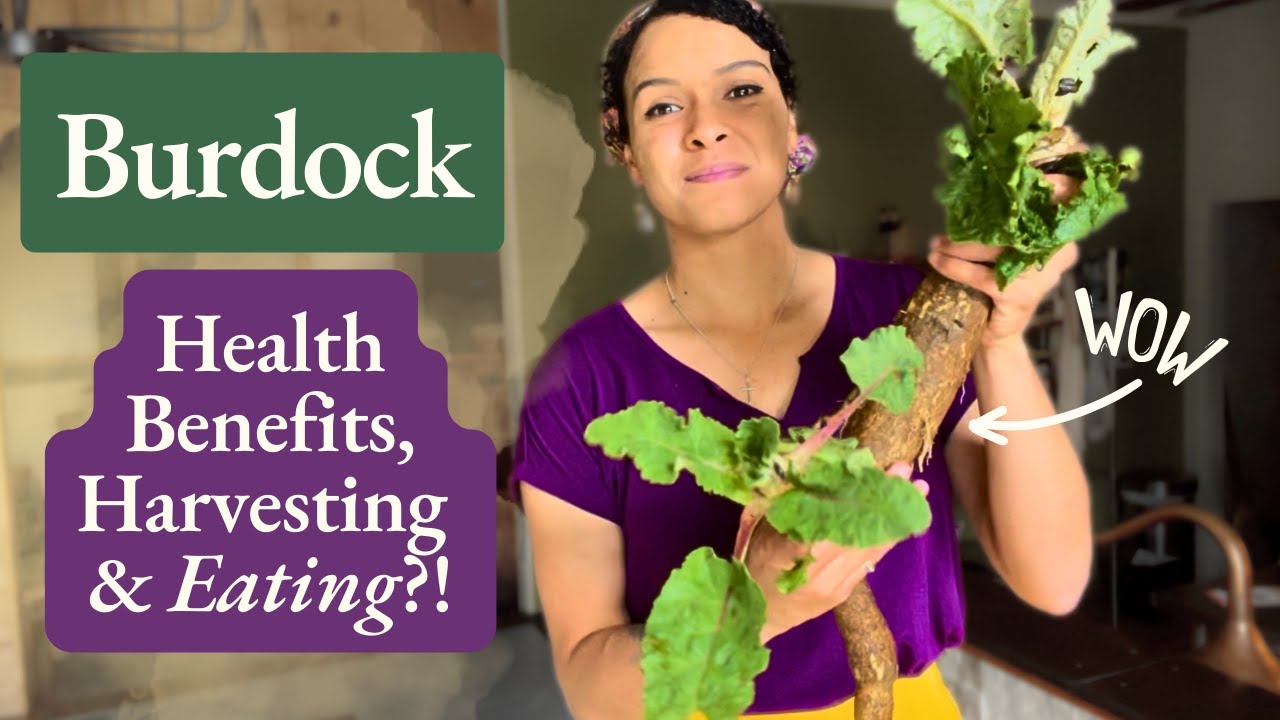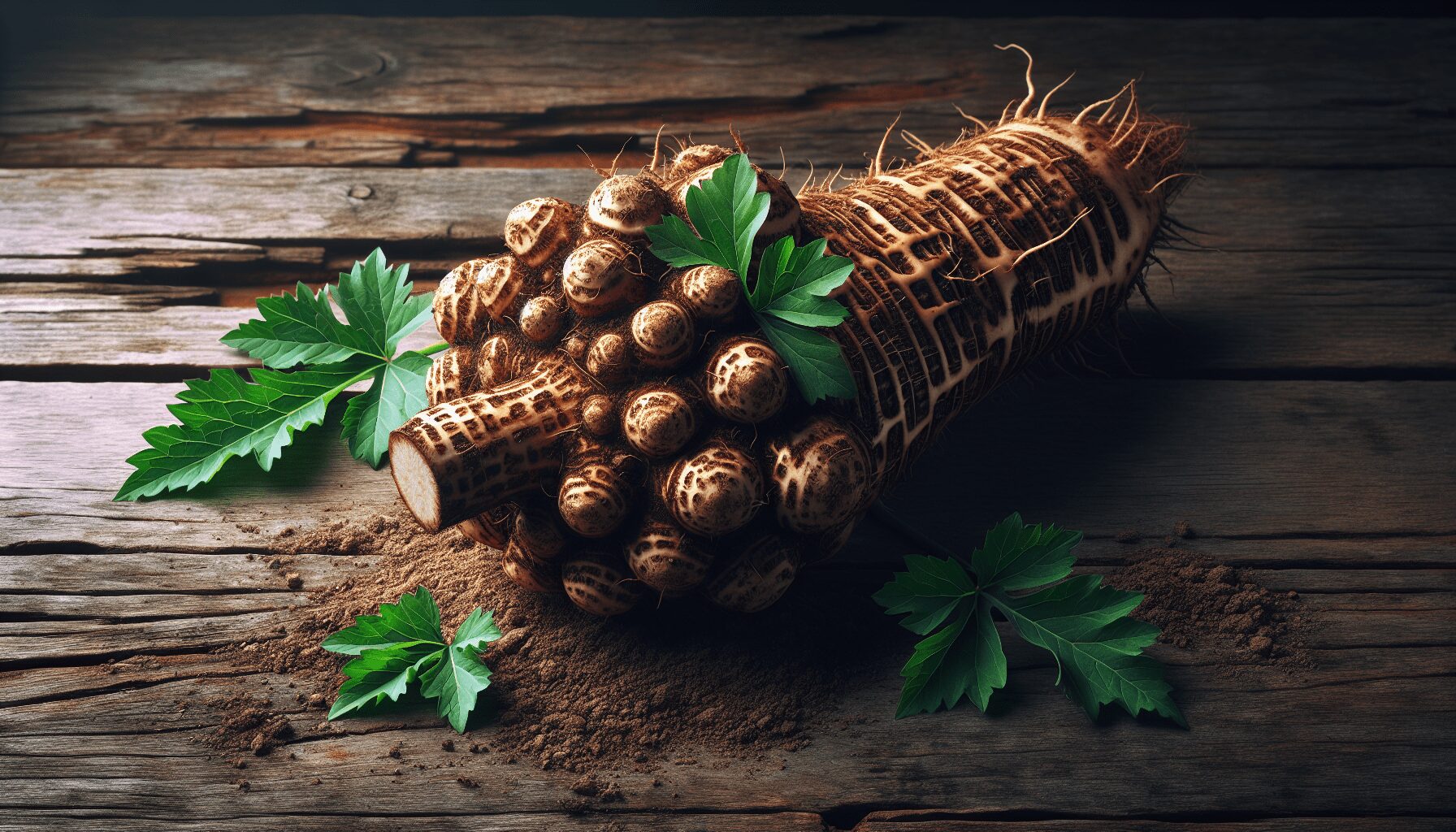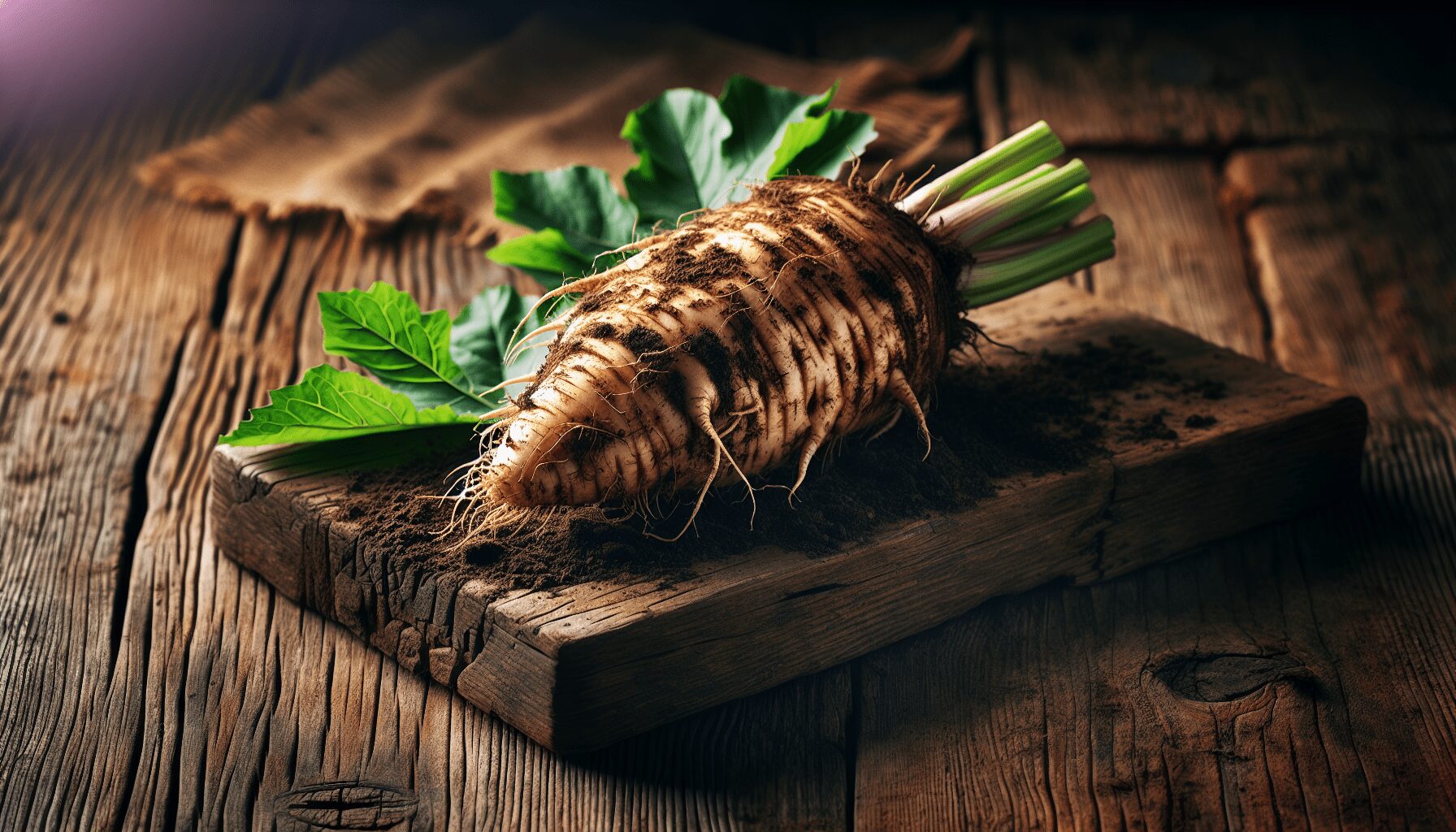Burdock! Health Benefits, Medicinal Uses & More” offers a fascinating look into a plant that many might overlook. You will learn how to identify burdock and discover its numerous health benefits and medicinal uses. From boosting your next meal to enhancing your cup of tea, this guide will introduce you to all the wonders of burdock.
The article also explores some intriguing facts, like how burdock inspired the invention of Velcro. You will gain insight into harvesting wild burdock root and discover its role in various cultural dishes. While the information is educational, it’s essential to consult a healthcare professional before incorporating burdock or any herb into your routine, especially if you are pregnant or planning to become pregnant. Enjoy your journey through the many uses and benefits of this remarkable plant!

This image is property of i.ytimg.com.
Identifying Burdock
Physical Characteristics
Burdock, also known as Arctium lappa, is a robust biennial plant renowned for its considerably large size. Mature burdock plants can reach up to 5.5 feet (1.6 meters) in height. You’ll notice the plant’s broad, egg-shaped, or elephant ear-shaped leaves that alternate up the stem. These leaves can become quite large, making them quite effective if you want to use them to shield your garden transplants from excess sun. Younger leaves emerge soft and velvety with lighter undersides. Throughout its growth stages, burdock presents a striking purple flower, which eventually turns into the burseed burrs many recognize.
Natural Habitat
Burdock thrives in nitrogen-rich soils, commonly found in fertile areas such as meadows, woodland edges, and disturbed lands. It enjoys a good amount of sunlight and often populates open fields, roadsides, and abandoned lots where conditions suit its growth preferences. Observing its preferred habitat can make identifying this plant much easier on your adventures.
Similar Plants and Differentiation
One plant that burdock is frequently mistaken for is rhubarb. The confusion stems from their similar growth formations and leaf shapes. Distinguishing between them is quite simple once you know what to look for. Burdock leaves are fuzzy or woolly and have ridged stems, while rhubarb leaves and stems are smooth. Additionally, burdock leaves are less curly than mature rhubarb leaves. Tasting the stems is another way to differentiate: burdock stems are more bitter compared to rhubarb.
Seasonal Identification Tips
In the early spring, look for dried stalk remnants from the previous year’s growth; these will have clusters of burs. If you spot these, it’s a good indicator that a burdock plant is nearby, just emerging from the ground. In its first year, burdock grows a rosette of leaves at ground level, and in its second year, it sends up the distinctive tall flowering stalk.
The Taproot: Burdock’s Hidden Gem
Structure and Growth Patterns
Burdock boasts an impressive taproot that can grow up to a meter deep. The taproot is designed to reach groundwater, ensuring the plant’s survival during droughts. This robust root system also helps in mining deep-seated soil minerals, which it brings closer to the surface, benefiting surrounding flora as well.
Nutritional Content
The burdock taproot is not just visually remarkable; it is packed with nutritional benefits. It’s rich in antioxidants, essential minerals like potassium, calcium, magnesium, and phosphorus, and contains inulin—a prebiotic fiber that supports gut health.
Harvesting Techniques
Harvesting burdock’s taproot requires determination. When digging, it’s best to start at a distance from the plant and work your way inward to avoid breaking the root. Using a garden fork might help loosen the soil around the root. If you’re growing burdock in your garden, plant it in loose, aerated mounds to make harvesting easier and help retain the full length of the root.
Culinary Uses
Burdock root can be incorporated in various culinary dishes. Its flavor is often compared to that of Jerusalem artichokes and parsnips. It can be used in soups, stews, stir-fries, and even pickled. In Japanese cuisine, burdock root, known as ‘gobo,’ is a popular ingredient in dishes like kinpira gobo, which involves sautéing the root with carrots in a sweet and savory sauce.
Medicinal Uses of Burdock Seeds
Blood Sugar Regulation
Burdock seeds have been traditionally used to regulate blood sugar levels. The seeds contain compounds that help to slow down the absorption of glucose in the intestines, making them a helpful natural option for managing diabetes.
Kidney Health
The seeds are also noted for their diuretic properties, which can support kidney health by aiding in the elimination of excess fluids and toxins. This makes burdock seeds a popular choice in herbal preparations aimed at supporting urinary system health.
Antioxidant Properties
Rich in antioxidants, burdock seeds help combat oxidative stress in the body, protecting cells from damage by free radicals. This not only supports overall health but also fortifies the body against chronic diseases.
Preparation Methods
Burdock seeds can be prepared in various ways. They are often dried and steeped in hot water to make a soothing tea. Alternatively, the seeds can be ground into a powder and incorporated into supplements or used as a seasoning in culinary dishes to impart their health benefits directly into your daily diet.
Burdock Root for Skin Health
Detoxifying Properties
Burdock root is celebrated for its detoxifying properties. Its ability to purify the blood and clear toxins from the body translates into better skin health. Regular consumption of burdock root can lead to clearer, more vibrant skin.
Treatment for Eczema
Burdock’s anti-inflammatory and antibacterial properties can alleviate symptoms of eczema. Applying burdock root extract topically, or drinking burdock tea, can reduce itching and skin irritation, providing much-needed relief.
Benefits for Psoriasis and Acne
The root’s purifying properties extend to conditions like psoriasis and acne. By detoxifying the blood and reducing inflammation, burdock root helps minimize outbreaks and soothes the skin. Consistent use can lead to noticeable improvements in these skin conditions.
Combination with Other Herbs
Burdock root pairs well with other powerful herbs for a more comprehensive detox effect. Combining it with dandelion root, stinging nettle, or even sarsaparilla can create potent herbal remedies that enhance skin health and overall detoxification.

Burdock as a Survival Food
Nutritional Benefits
In a survival scenario, burdock can be a crucial source of nutrients. Its roots, leaves, and even seeds offer a wealth of vitamins, minerals, and fibers that can sustain you. The high concentrations of essential minerals like calcium and potassium are particularly beneficial for maintaining bodily functions when other food sources are scarce.
Cooking Techniques
Preparing burdock root for consumption can include boiling, sautéing, or roasting. Due to its fibrous nature, it’s often recommended to slice the root thinly if eaten raw or steam it to soften the texture. Incorporating burdock into soups and stews enriches the meal with its earthy flavor and nutritional value.
Comparisons with Other Root Vegetables
Burdock root’s nutritional profile rivals that of other common root vegetables such as carrots and potatoes. However, its high inulin content sets it apart, offering unique benefits for digestive health. Its taste, reminiscent of artichokes and parsnips, makes it a versatile ingredient in various dishes.
Cultural Dish Applications
Across different cultures, burdock is used diversely in culinary traditions. For instance, in Japanese cuisine, burdock is a central ingredient in the dish kinpira gobo. In Chinese medicine, burdock is used both for its medicinal properties and its taste in broths and soups. Understanding these cultural applications provides a rich context for incorporating burdock into your diet.
The Invention of Velcro: A Fun Fact
History of Velcro
Velcro was invented by Swiss engineer George de Mestral in 1941. After taking a walk in the woods, he noticed how burdock burs clung persistently to his clothing and his dog’s fur. This observation led to a groundbreaking invention.
Biomimicry and Burdock
Biomimicry involves studying nature’s design principles and applying them to solve human problems. By examining burdock’s hook-and-loop system, de Mestral invented Velcro, a combination of two nylon strips—one with hooks and the other with loops—mirroring the natural mechanism of burdock burs.
Practical Applications of Velcro
Today, Velcro is used globally in an array of practical applications. From clothing to medical devices, sports equipment, and even space missions, this versatile fastening system has profoundly impacted modern life.
Impact on Modern Life
The invention of Velcro has simplified various aspects of daily activities and industrial processes. Its ease of use, reliability, and strength have made it indispensable, showcasing how a simple plant can inspire innovations that transform our lives.

Health Benefits of Eating Burdock
Blood Sugar Control
Consuming burdock can help manage blood sugar levels. The root’s polysaccharides support slow absorption of glucose from the digestive tract, stabilizing blood sugar levels and potentially aiding in the management of diabetes.
Mineral Content
Burdock root is mineral-rich, boasting significant levels of potassium, magnesium, calcium, and phosphorus. These minerals support essential functions such as muscle contraction, neural transmission, and bone health, making burdock a valuable addition to your diet.
Fiber and Digestive Health
The inulin fiber in burdock root acts as a prebiotic, promoting healthy gut bacteria and improving digestive health. It helps regulate bowel movements, reduces constipation, and enhances overall gastrointestinal function.
Regular Dietary Inclusion
Incorporating burdock into your regular diet can contribute to a well-rounded nutritional intake. Whether added to soups, stews, or salads or consumed as a tea, burdock is a versatile ingredient that offers multiple health benefits over time.
Culinary Uses Across Cultures
Asian Cuisine: Japanese ‘Gobo’
In Japan, burdock root, called ‘gobo,’ is a staple in various traditional dishes. One famous preparation is kinpira gobo, where the root is julienned and sautéed with carrots and seasoned with soy sauce and mirin. Its crunchy texture and earthy flavor make it a favorite side dish.
European Dishes
While not as commonly used in European cuisine, burdock has found a place in some traditional recipes, especially in foraging communities. It is often used in soups and broths for its medicinal properties and hearty flavor.
Innovative Recipes
The popularity of burdock is rising among health-conscious foodies. Innovative recipes include burdock root fries, burdock tea lattes, and even burdock-infused smoothies. Exploring these modern takes can be a fun way to integrate burdock into your diet.
Incorporating Burdock into Your Diet
Adding burdock to your meals doesn’t have to be challenging. Start by incorporating thin slices of the root into salads or soups. You can also brew a fresh cup of burdock tea or add powdered burdock root to smoothies for an added health boost.
Harvesting and Growing Your Own Burdock
Ideal Growing Conditions
Burdock grows best in well-drained, fertile soil with a neutral pH. It enjoys full sun but can tolerate partial shade. Ensure that the soil is loose and deep to accommodate its long taproot.
Planting Techniques
Start seeds indoors before the last frost and transplant seedlings into the garden once the soil is workable. Space plants about 18 inches apart to provide ample room for growth. Alternatively, direct sow seeds in the ground after the danger of frost has passed.
Harvesting Tips
Wait until late fall or early spring of the second year to harvest burdock roots when they are at their peak. Use a garden fork to gently lift the root from the soil, starting at a distance to avoid damaging it. Clean thoroughly and store in a cool, dry place.
Ensuring High-Quality Roots
To yield high-quality roots, ensure consistent watering, especially in dry periods, and regularly amend the soil with organic matter. Avoid using chemical fertilizers, which can affect the root’s flavor and medicinal properties.
Conclusion
Summary of Key Points
Burdock is a multifaceted plant with numerous health benefits, culinary uses, and even historical significance in innovations like Velcro. From identifying it in the wild to understanding its medicinal properties and creative culinary applications, burdock offers unique value.
Encouraging Safe Use
While burdock boasts many benefits, it’s essential to use it responsibly. Ensure proper identification to avoid confusing it with non-edible look-alikes and follow recommended dosages in medicinal use.
Consultation with Healthcare Professionals
As with any herb, consult a healthcare professional before adding burdock to your regimen, especially if you’re pregnant, nursing, or have a medical condition. This will ensure it’s safe and suitable for your specific health needs.
Final Thoughts
Embrace burdock as a versatile addition to your diet and wellness routine. Whether you’re foraging in the wild, growing it in your garden, or exploring its culinary potential, this remarkable plant has much to offer. Enjoy the journey of discovering burdock and its myriad benefits!